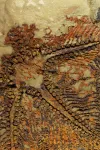(Press-News.org) Pathogenic bacteria in humans are developing resistance to antibiotics much faster than expected. Now, computational research at Chalmers University of Technology, Sweden, shows that one reason could be significant genetic transfer between bacteria in our ecosystems and to humans. This work has also led to new tools for resistance researchers.
According to the World Health Organisation, antibiotic resistance is one of the greatest threats to global health, food safety and development. It already causes over 33,000 deaths a year in Europe alone.
Completely different species of bacteria can spread resistance genes to each other through plasmids - small DNA molecules where bacteria store some of their genes outside the chromosome. When two bacterial cells come into contact, they can copy plasmids to each other. This is called conjugation, and it is the most important mechanism for spreading antibiotic resistance.
"In recent years, we've seen that resistance genes spread to human pathogens to a much greater degree than anyone expected," says Jan Zrimec, researcher in systems and synthetic biology at Chalmers University of Technology. "Many of the genes appear to have originated in a wide array of bacterial species and environments, such as soil, water and plant bacteria.
"This has been difficult to explain, because although conjugation is very common, we've thought that there was a distinct limitation for which bacterial species can transfer plasmids to each other. Plasmids belong to different mobility groups, or MOB groups, so they can't transfer between just any bacterial species.
Zrimec has developed new methods of data analysis that show that genetic transfer may be much more boundless and widespread than previously expected.
Among other things, he has developed an algorithm that can identify specific DNA regions that are necessary for conjugation - called oriT regions - in large amounts of data consisting of genetic sequences from the DNA of thousands of plasmids. The algorithm can also sort plasmids into MOB groups based on the identified oriT regions.
He has used the algorithm to explore known gene sequences from over 4,600 naturally occurring plasmids from different types of bacteria, which has not been possible to do systematically before. The results show, among other things, that:
The number of oriT regions may be almost eight times higher than those found with the standard method used today.
The number of mobile plasmids may be twice as high as previously known.
The number of bacterial species that have mobile plasmids may be almost twice as high as previously known.
Over half of these plasmids have oriT regions that match a conjugation enzyme from another plasmid that has previously been classified in a different MOB group. This means that they could be transferred by one of these plasmids that happens to be in the same bacterial cell.
The last part means that there may be transfer mechanisms between large numbers of bacterial species and environments where we previously believed there were barriers.
"These results could imply that there is a robust network for transferring plasmids between bacteria in humans, animals, plants, soil, aquatic environments and industries, to name a few," Zrimec explains. "Resistance genes occur naturally in many different bacteria in these ecosystems, and the hypothetical network could mean that genes from all of these environments can be transferred to bacteria that cause disease in humans.
"This may be a possible reason for the rapid development of resistance in human pathogens that we have observed in recent years. Our extensive use of antibiotics selects for resistance genes, which could thus flow in from a much larger naturally occurring genetic reservoir than we previously estimated."
The results need to be verified experimentally in the future, but the data analysis methods Zrimec developed can already be employed by many of the researchers working with antibiotic resistance in various medical and biological fields. They provide a powerful new tool for systematically mapping out the potential transferability of different plasmids.
"This has been a major limitation of the research field up to now," Zrimec says. "I hope that the methods will be able to benefit large parts of the research into antibiotic resistance, which is an extremely interdisciplinary and fragmented area. The methods can be used for studies aiming to develop more effective limitations to antibiotic use, instructions for how antibiotics are to be used and new types of substances that can prevent the spread of resistance genes at the molecular level."
More about: Genetic transfer through conjugation:
In order for conjugation to start, an enzyme is needed - a relaxase - which fits onto a specific location on the plasmid. The relaxase has to recognise and bind to a region where the DNA ring can be nicked and a strand can be transferred to the next bacterium. This DNA region is called the origin of transfer, or oriT.
Previously, it was thought that an individual plasmid must contain both the gene for the relaxase and a matching oriT in order to be transferred to other bacteria. But a bacterial cell can contain several plasmids, and in recent years various researchers have shown that a relaxase from one plasmid can fit with an oriT region on another plasmid in the same cell and activate the conjugation of that plasmid.
This means that it may be enough for a plasmid to have only an oriT to be able to conjugate, which in turn means that many plasmids that have previously been classed as nonmobile, because they lack the relaxase gene, can be conjugative. But until now it has not been known how common the phenomenon is among bacteria. This is one of the knowledge gaps that Zrimec's results are helping to fill in.
More about: The new method compared with the current standard:
The current standard tools for assessing the transferability of plasmids are based on searching for the DNA sequences for the relaxase enzyme or for oriT regions that the enzyme can bind to. There are several key limitations to this. For one, some tools produce incomplete results, while others require extremely time-consuming and resource-demanding laboratory tests.
Zrimec's new data analysis method is based solely on identifying oriT regions, using special physiochemical properties found specifically in oriT regions of DNA. Through previous research, he has shown that these physiochemical signatures - which determine which relaxase can bind to the oriT region - are more stable and specific than the DNA sequences themselves. This allows the classification of the plasmids to the right MOB group based on the oriT region, independently of relaxase, which also allows researchers to map out the overall transferability between different bacterial species and environments.
The method can manage large amounts of data and can be used to search effectively for oriT regions on plasmids in their entirety.
INFORMATION:
Since 1997 (Reno vs. American Civil Liberties Union), the Supreme Court has used the metaphor of the free market of ideas to define the Internet, thus addressing the regulation of the net as a matter of freedom of speech. In law, metaphors have a constitutive value and, once established, affect the debate and the decisions of the Courts for a long time. In the paper 'Judicial Frames and Fundamental Right in Cyberspace', published in the American Journal of Comparative Law, Oreste Pollicino (Bocconi University) and Alessandro Morelli (Università Magna Graecia, Catanzaro) apply to judicial reasoning reflections on metaphors and go so far as to criticize, on the one hand, the US Supreme Court's orientations on (non-)regulation of the Internet and, on the other, to invoke changes ...
In the first systematic large-scale evaluation of the UK National Early Warning Risk Score (NEWS) 2 as a scoring system for predicting severe COVID-19 outcomes in patients, researchers at King's College London have found poor-to-moderate accuracy for identifying patients at risk of being transferred to intensive care units (ICUs) or dying after 14 days of hospitalisation. Accuracy of predictions in short term (three days) showed moderate success.
For people who are hospitalised with severe COVID-19, it is vital to quickly identify which patients may deteriorate and require transfer to an intensive care unit (ICU) for organ support or may die. NEWS2 is an ...
Researchers from the University of Cambridge have discovered a fossil of the earliest starfish-like animal, which helps us understand the origins of the nimble-armed creature.
The prototype starfish, which has features in common with both sea lilies and modern-day starfish, is a missing link for scientists trying to piece together its early evolutionary history.
The exceptionally preserved fossil, named Cantabrigiaster fezouataensis, was discovered in Morroco's Anti-Atlas mountain range. Its intricate design - with feathery arms akin to a lacework - has been frozen in time for roughly 480 million years.
The new species is unusual because it doesn't have many of the key features of its contemporary relatives, lacking roughly 60% of ...
Antidepressants are commonly used worldwide to treat pain, however new research from the University of Sydney shows they offer little to no help for people suffering chronic back pain and osteoarthritis and may even cause harm.
Back pain and knee osteoarthritis affect millions of people globally and are leading causes of disability. When first-line pain medications such as paracetamol and ibuprofen fail to improve symptoms, many people are prescribed antidepressants for their pain. Most clinical practice guidelines recommend antidepressants for long term (chronic) back pain and hip and knee osteoarthritis, yet evidence supporting their use is uncertain.
Published today in the BMJ the ...
Antidepressant drugs are largely ineffective for back and osteoarthritis pain, despite being widely used for these conditions, suggests a review of the evidence published by The BMJ today.
The findings, based on moderate certainty evidence, show that for people with back pain the effects were too small to be worthwhile, but for osteoarthritis a small beneficial effect cannot be ruled out.
Most clinical practice guidelines recommend antidepressants for long term (chronic) back pain and hip and knee osteoarthritis, yet evidence supporting their use is uncertain.
To address this knowledge gap, researchers led by Giovanni Ferreira at the ...
Adding the arthritis drug tocilizumab to standard care for patients in hospital with severe or critical covid-19 is no better than standard care alone in improving clinical outcomes at 15 days, finds a new trial published by The BMJ today.
There was an increased number of deaths at 15 days in patients receiving tocilizumab, resulting in the trial being stopped early.
Today's results contradict earlier observational studies suggesting a benefit of tocilizumab. However, observational effects are limited by a high risk that they may be due to other unknown (confounding) factors - and some studies have not yet been peer ...
MINNEAPOLIS - A new study has found a brain pressure disorder called idiopathic intracranial hypertension is on the rise, and the increase corresponds with rising obesity rates. The study is published in the January 20, 2021, online issue of Neurology®, the medical journal of the American Academy of Neurology. The study also found that for women, socioeconomic factors like income, education and housing may play a role in their risk.
Idiopathic intracranial hypertension is when the pressure in the fluid surrounding the brain rises. It can mimic the symptoms of a ...
MINNEAPOLIS - A new study shows that intense immunosuppression followed by a hematopoietic stem cell transplant may prevent disability associated with multiple sclerosis (MS) from getting worse in 71% of people with relapsing-remitting MS for up to 10 years after the treatment. The research is published in the January 20, 2021, online issue of Neurology®, the medical journal of the American Academy of Neurology. The study also found that in some people their disability improved over 10 years after treatment. Additionally, more than half of the people with the secondary progressive form of MS experienced no worsening of their symptoms 10 years after a transplant.
While most people with MS are first diagnosed with relapsing-remitting MS, marked by symptom ...
The new tech elite share distinct views setting them apart from other segments of the world's elite more generally, according to a study published January 20, 2020 in the open-access journal PLOS ONE by Hilke Brockmann from Jacobs University Bremen, Germany, and colleagues.
The global economic landscape over the last half-century is marked by a shift to a high-tech economy, dominated by the "Big Nine" (Amazon, Apple, Facebook, Google, IBM, Microsoft, Alibaba, Baidu, Huawei, and Tencent), computer hardware and software manufacturers, and most recently, app companies. In this study, Brockmann and colleagues investigate the worldviews of the 100 richest people in the tech world (as defined by Forbes).
Though the authors initially approached all 100 of their subjects for a face-to-face ...
In the Early Bronze Age of Europe, ancient people used bronze objects as an early form of money, even going so far as to standardize the shape and weight of their currency, according to a study published January 20, 2020 in the open-access journal PLOS ONE by Maikel H. G. Kuijpers and C?t?lin N. Popa of Leiden University, Netherlands.
Money is an important feature of modern human society. One key feature of money is standardization, but this can be difficult to identify in the archaeological record since ancient people had inexact forms of measurement compared with today. In this study, the authors assessed possible money from the Early Bronze Age of Central Europe, comparing the objects based on their perceived - if not ...




